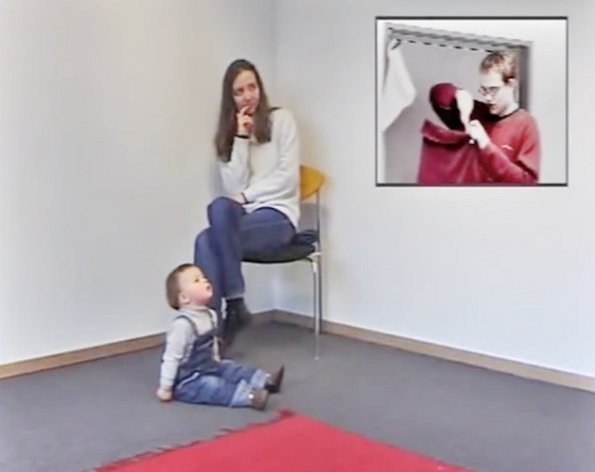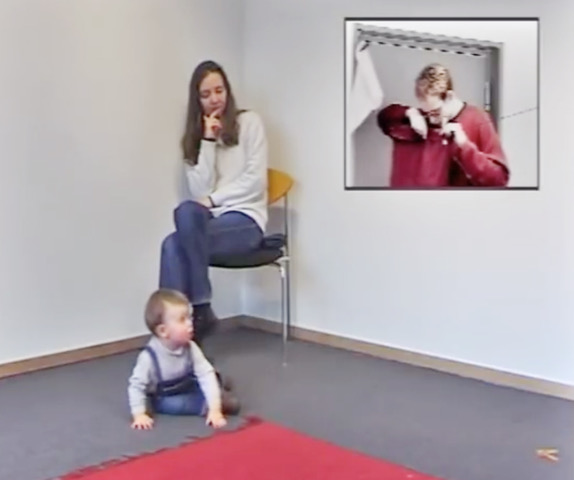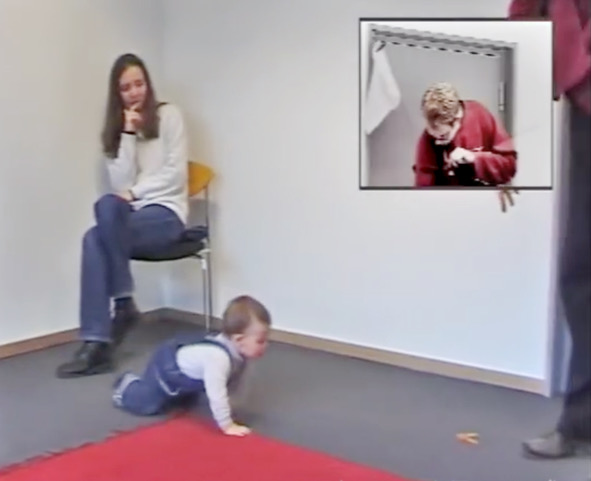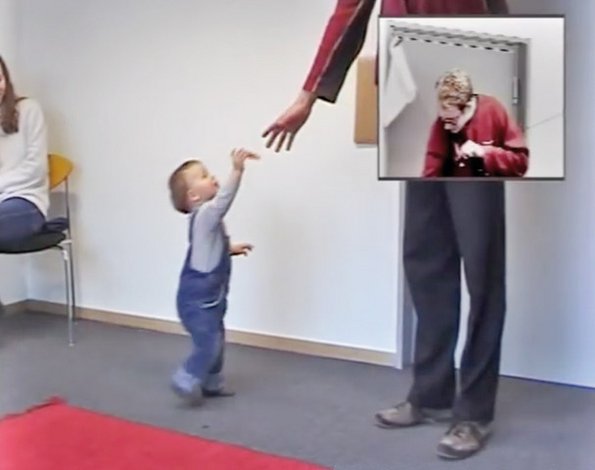Sensitive, helpful and generous
Traits we can build upon in the upbringing of our children
by Dr Eliane Perret, remedial teacher and psychologist
For those who occasionally want to treat themselves to a little relaxation while reading a book, we recommend the children’s and young adults’ books by the deceased Swiss writer Olga Meyer (cf. Current Concerns No. 21, 2 October 2019). Unfortunately, her books are only available in second-hand bookshops.1 So, I recently curled up on the sofa with “Chrigi. Heitere und ernste Erlebnisse eines Bergbuben” (Chrigi. Cheerful and serious experiences of a mountain boy). The story quickly captivated me because it inspired me to think about fundamental issues. I was impressed by how Chrigi acquired his tools for life in a family that mastered their life as mountain farmers under very demanding conditions. It was also pleasant to feel how the emotional solidarity went far beyond the family and how naturally one supported the other within the village community when there was a need. So, I went along inwardly into Chrigi’s world and kept thinking new thoughts.
“I think this little birdie will make me well again!”
The innkeepers in the village had a bird that had never appeared in Chrigi’s world before. It was a golden yellow canary that could sing beautifully. The boy listened to its song with fascination as he passed by, but the bird also gave pleasure to other people, as his mother once mentioned casually. Chrigi had observed for some time that she was often sad, for reasons that were not clear to him. “Would the little yellow bird be able to relieve her of her sadness?” he wondered. When the landlords died in a tragic accident, their belongings – including the canary – were to be auctioned off. This bothered Chrigi and he made a plan to buy this bird for his mother. However, he still lacked the necessary money. So, he looked for ways to earn it, and after two weeks of hard work in house construction helping, he saved necessary seven francs. Despite his efforts, the plan almost failed had his neighbour not secretly supported his strivings. So finally, on his mother’s name day, the cage with the yellow bird stood on the table and accompanied her through everyday life with its song. Sometime later, the mother said thoughtfully: “I think this little bird will make me well again!” For Chrigi, this was a supportive and encouraging experience; it strengthened his sense of self-efficacy, as they say today. An example from another time and yet highly topical in its message!
Cooperative by nature or selfish?
What could have motivated Chrigi to act altruistically? Was it the emotional closeness to his mother? His child's sense of responsibility for their welfare? Of course, these individual emotional factors play an important role and must be weighted sufficiently. Today, important and clarifying results from attachment research and individual psychology are available to us. However, Chrigi’s sympathy did not seem to me to be a rare exception. At the beginning of the Corona pandemic, for example, many children and young people spontaneously offered to do the shopping, other chores or used their digital skills to help elderly people they did not know. So, what does science have to say about this?
An inherent quality of man
For a long time, two points of view dominated the discussion on this issue: “Humans are naturally helpful to others and are corrupted by society” was the position of one side. “Children are born as pure egoists and their ability to cooperate is due to their ability to internalise cultural norms and values. Education is needed for this,” argued the others. Today’s research, however, clearly states that there is not an either or an or, but that altruistic behaviour is based on an interplay of biology, upbringing and social circumstances. Spontaneous sympathy, jumping in when the other person needs it, is an inherent human characteristic that must be fostered and consolidated in the education and upbringing of children. In order to understand this more precisely, it was researched carefully. It dealt with the question of helping, sharing important goods and passing on important information in human coexistence. This brought us closer to the phylogenetic and ontogenetic roots of altruism.
Spontaneous assistance even from the youngest
As early as 2006, Felix Warneken and Michael Tomasello, two psychologists and anthropologists working at the Max Planck Institute for Evolutionary Anthropology in Leipzig at the time, drew attention to the fact that children as young as 18 months old willingly lend a hand to people in trouble, even if they do not know them. Children who were still in nappies and only just learning to talk already recognised how they could help someone. The two researchers worked out a series of tests in which the little ones had to perform various tasks.2 For example, Warneken let clothespins fall to the floor out of his reach while he was hanging up the laundry. In the first ten seconds, he tried unsuccessfully to reach for the clothes pegs. In the next attempts he made eye contact with the child and after another twenty seconds he said, “My clothespin!” Almost all the children helped at least once and in 84 per cent of all cases they did so in the first ten seconds, before Warneken could even alert them to his problem. But he never asked the child directly for help, nor did he thank them specifically or reward them for bringing him the clamp. It even turned out that rewards led to the children limiting their spontaneous help in the future. The researchers suspected that rewards undermine the intrinsic motivation of young children. An important finding in view of today’s very widespread (learning) therapies that prefer to work with such reinforcers!
“There's the spoon …” – The shared intentionality
But couldn’t it be that the little ones had picked up brackets before and this was nothing new for them? Perhaps they liked to tidy up or sought to maintain contact with the adult by playing a game? Warneken refuted these objections with other, more complicated tasks. He unintentionally dropped a spoon through a narrow hole into a box that had a flap through which objects could be retrieved. The scientist acted as if he knew nothing about the flap. The children again jumped in and helped him. But only if he had previously tried in vain to pick the spoon out of the box through the hole, and not if he had deliberately dropped it in. With numerous further studies, the researchers refined their statements and ruled out possible false assumptions through the experimental designs. The children’s behaviour was astonishing and challenging. To be able to provide the help needed in such situations, children must both understand the other person’s goal and be motivated to help them. One therefore speaks of shared intentionality, a common intention.
Chrigi’s altruistic behaviour was therefore – at least at that time – nothing out of the ordinary, because even two-year-old children are willing and able to stand up for others, even if they do not derive any benefit from it. They even take a lot on themselves and, for example, interrupt an exciting game to provide help. They bring this willingness into the world through their social preadaptation. However, it must be addressed, this social preadaptation must be further developed, and cultivated by the educators and parents/caregivers. Alfred Adler, the founder of individual psychology, had already pointed out this fact.
Not only in humans
The researchers did not limit their series of tests to the human species, but also looked at the behaviour of chimpanzees, the closest primate relatives of humans, to find out whether altruism is a behaviour already rooted in evolution. The chimpanzees jumped in similarly in the experiments, but only for simple tasks. This suggests that spontaneous helping has deep evolutionary roots and belongs to the human species. – However, altruistic behaviour is not limited to helping others achieve a certain goal. Much more demanding is sharing available resources (for example, food) or passing on important information so that a problem can be solved. Again, the research showed that young children tend to share rewards equally and generously. When they get a little older, they start to choose their exchange partners a little more selectively and prefer to share with someone with whom they have already exchanged something earlier and had a good experience.
So even young children are spontaneously helpful, sharing and supportive with important information.
Not only me, but also the others
Chrigi also shared his treasures with his siblings and friends. For example, he received a “Batzen” (a coin) from a cattle dealer at a market who was impressed by the boy’s helpfulness and sense of responsibility. It was natural for him to invite his younger siblings to go along with him and to think carefully about how they could spend time together and have fun. Aren’t many children today missing exactly this experience of putting their own desires in the background and helping out others? To do this they need our guidance and our example. Chrigi had this in his father, among others. He (and I) remembered one experience in particular: During one winter, a school class from the city spent their ski camp near Chrigi. One day, one of the pupils had an accident, and when Chrigi came home from school, the victim was carefully laid on his father’s large wooden sled in the living room and carefully transported down into the valley. Chrigi followed his father to help him bring the heavy sled back home.
Giving and accepting help
Chrigi experienced, however, that he and his family were also helped. That same winter, their farm was buried by an avalanche. Now it was the neighbours and the people from the village who helped when the father called them for help. So, the mother and her children were rescued alive from the masses of snow. But the family’s home and livelihood were destroyed. The teenage skiers were touched deeply by the family’s plight, and now it was they who spontaneously suggested to their teacher that they would help rebuild the house, and then they did. Doesn’t this remind you of the many spontaneous offers of help at the beginning of the Corona pandemic?
An interplay of biology, upbringing, and social circumstances
So Chrigi inspired me to several important considerations – applied psychology. It feels optimistic that children are empathetic, helpful, and generous from a very early stage in their development and willingly contribute important information. They are preadapted to this by nature, so it does not need to be implanted. However, the development of altruistic behaviour is based on an interplay of biology, upbringing and social circumstances. As the children grow up, social experiences and cultural traditions become more and more important. For this, they need parents to guide them, introduce them to the values and norms of their own culture and correct any undesirable developments. Outside of the family, school and state also have a responsibility to form the next generation. As a child I was very fortunate to hear Chrigi’s story during the children’s hour on the radio. Olga Meyer, the author, dedicated her book to her both big and small listeners. It would certainly also appeal to today’s children. But the point here is not to glorify “the good old times”. People had to cope with harsh living conditions and the progress made since then is a blessing. That is why today’s parents, educators and those responsible for education can draw on sound scientific knowledge and carry out their task with that background. There they and all of us lay the foundations for solving even challenging situations through joint work.
This knowledge of the social human nature, of the spontaneous willingness to help each other, can be the basis for a more peaceful coexistence, on which we all so urgently depend. Having this with us, putting it into practice and passing it on can be our personal contribution to peace. •
1 Olga Meyer’s books draw life portraits of children and young people who lived in the Tösstal valley or in the city of Zurich. They provide an insight into the living conditions and the way people lived in the first half of the 20th century. Cf. Perret, Eliane. “We should learn again to see with the heart. Thoughts on the 130th birthday of Swiss children’s and youth book author Olga Meyer” In: Current Concerns No. 21 of 2 October 2019.
2 Warneken, Felix. Der Ursprung der Kooperation beim Menschen: Neue Einsichten aus der Forschung mit Kindern. (The origin of cooperation in humans: New insights from research with children) Keynote lecture on the origins of cooperation in humans at the International Symposium “Childhood, Youth and Society VIII”/2016 – at the Festpielhaus Bregenz – organised by the Netzwerk Welt der Kinder. Can be seen on YouTube: https://swisscows.com/video/watch?query=Felix%20Werneken&id=DD70E141064066CDD58DDD70E141064066CDD58D, retrieved 26 Dec 2021
Sources:
Meyer, Olga. (1964) Chrigi. Heitere und ernste Erlebnisse eines Bergbuben. (Chrigi. Cheerful and serious experiences of a mountain boy.) Aarau und Frankfurt a. Main: Sauerländer
Tomasello, Michael. (2010) Why We Cooperate. MIT Press, 2009
Warneken, Felix; Tomasello, Michael. “The Developmental and Evolutionary Origins of Human Helping and Sharing”. In: The Oxford Handbooks of Prosocial Behavior; www.oxfordhandbooks.com
Warneken, Felix; Tomasello, Michael. “Varieties of altruism in children and chimpanzees”. In: Trends of Cognitive Sciences. 2009 Sept. 13(9): pp. 397–402; www.academia.edu
The experimenter’s clothespin (visible in the mirror) fell to the floor. The little boy observes this and brings it to him. – Already 18-month-old children willingly go to the aid of people in difficulty. To do this, they must both understand the other person’s goal and be motivated to help him. Therefore, we speak of shared intentionality, a common intention. (Images Screenshots from swisscows.com; ©Warneken/Tomasello)



